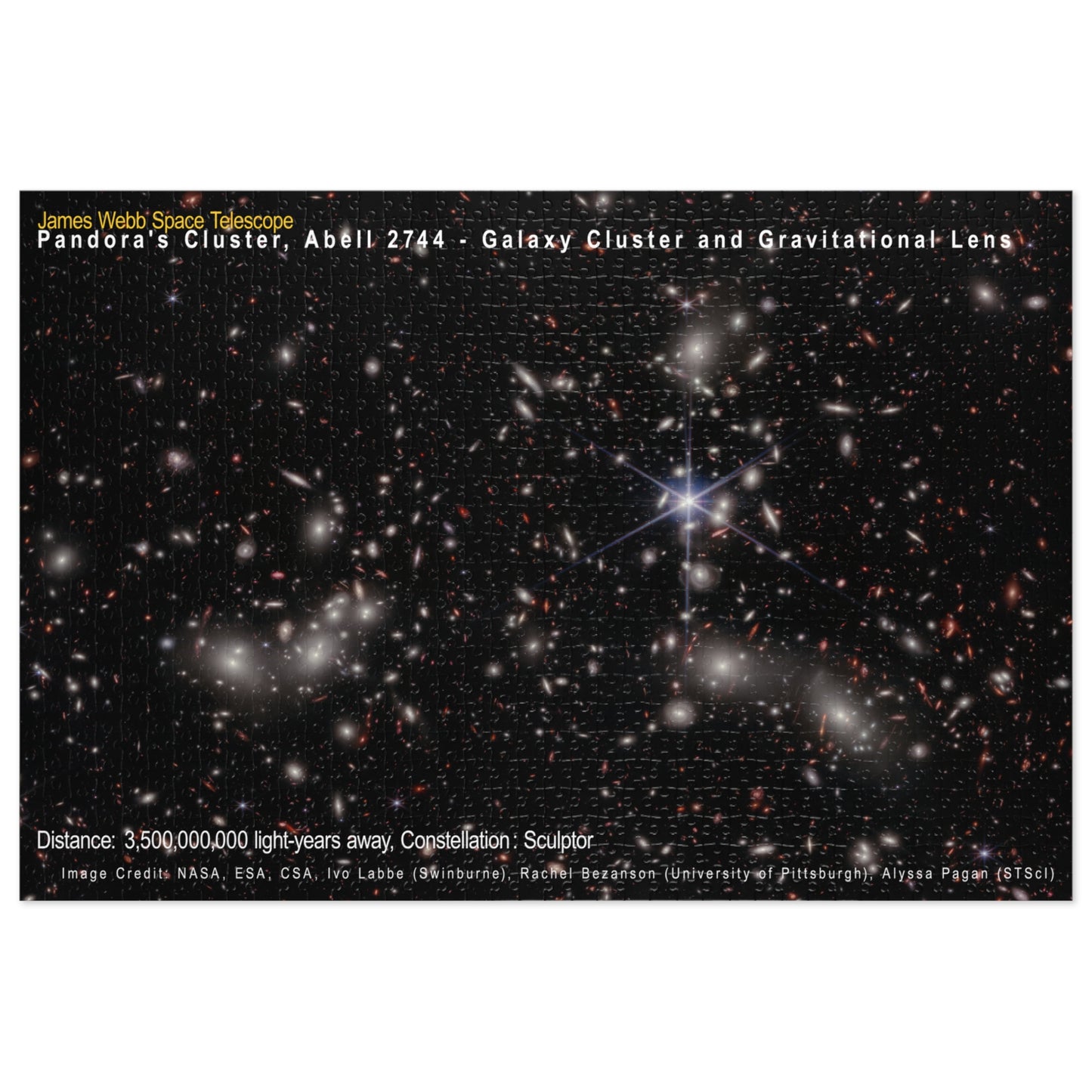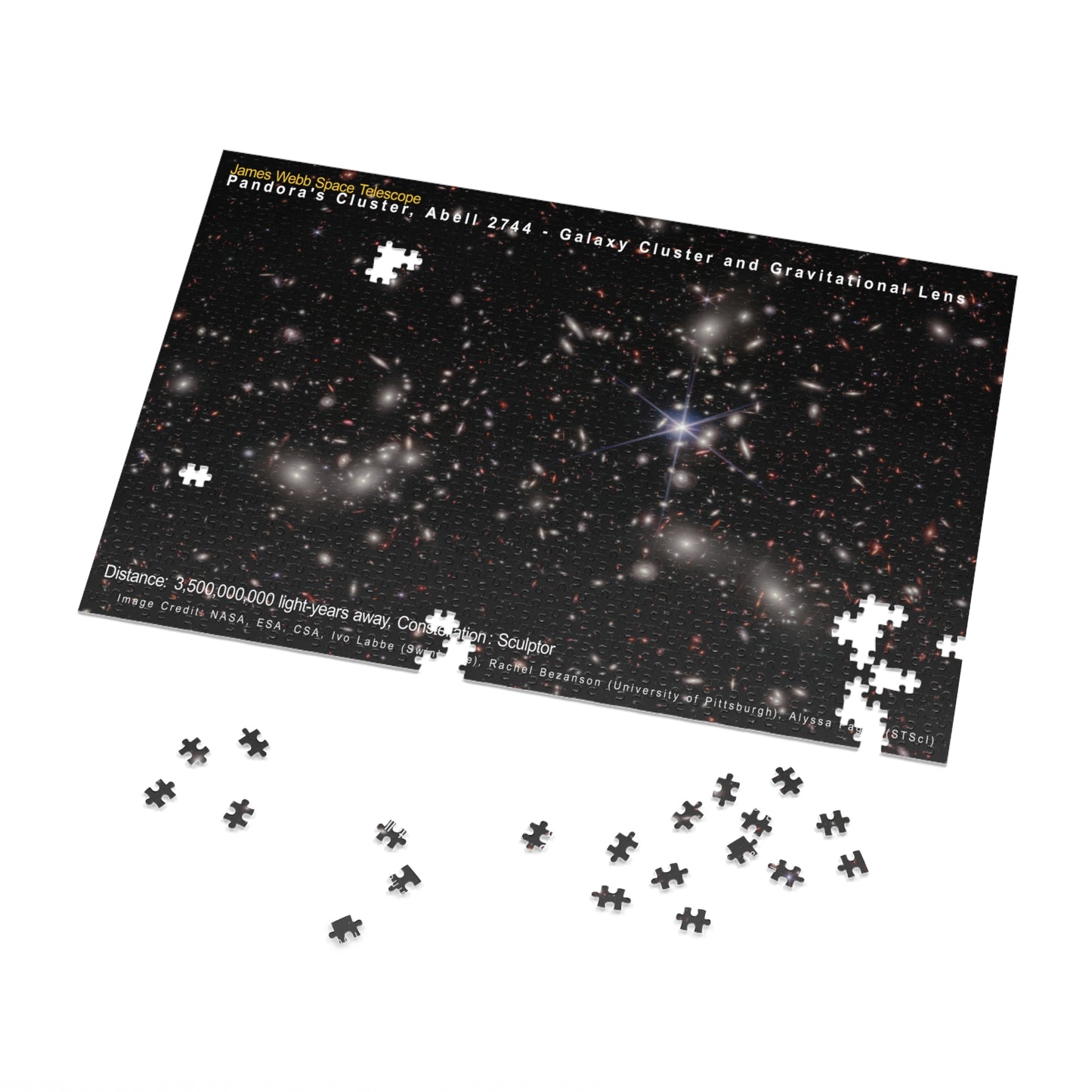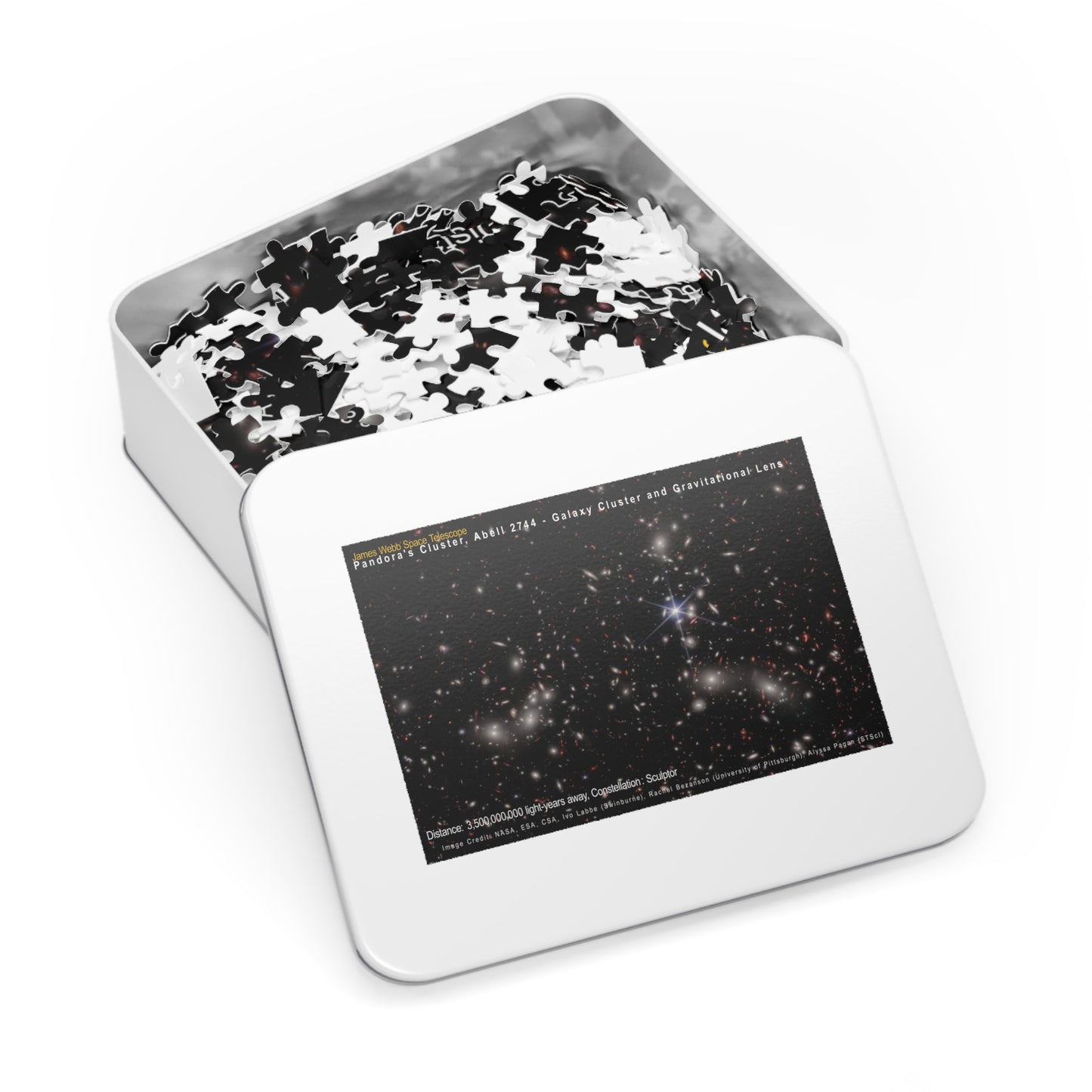Pandora's Cluster, Jigsaw Puzzle
Pandora's Cluster, Jigsaw Puzzle
Couldn't load pickup availability
Unveiling the Mysteries of the Cosmos: Dive Deep with Our Galaxy Puzzles!
Embark on a challenging and rewarding journey with stunning images.
A Universe of Wonder: Lose yourself in breathtaking views of distant galaxies, nebulae, and star clusters captured by the most powerful telescope ever built.
A Challenge Worthy of Any Stargazer: Choose from various puzzles to test your skills.
Sharpen Your Mind: As you piece together the cosmos, you'll develop problem-solving abilities, logical reasoning, and concentration.
Become an astronaut of the mind and explore the universe from the comfort of your home!
Pandora's Cluster:
Astronomers estimate 50,000 sources of near-infrared light are represented in this image from NASA's James Webb Space Telescope. Their light has travelled through varying distances to reach the telescope's detectors, representing the vastness of space in a single image. A foreground star in our own galaxy, to the right of the image center, displays Webb's distinctive diffraction spikes. Bright white sources surrounded by a hazy glow are the galaxies of the Pandora's Cluster, a conglomeration of already massive clusters of galaxies coming together to form a megacluster. The concentration of mass is so great that the fabric of spacetime is warped by gravity, creating an effect that makes the region of special interest to astronomers: a natural, super-magnifying glass called a "gravitational lens" that they can use to see very distant sources of light beyond the cluster that would otherwise be undetectable, even to Webb.
These lensed sources appear red in the image, and often as elongated arcs distorted by the gravitational lens. Many of these are galaxies from the early universe, with their contents magnified and stretched out for astronomers to study. Other red sources in the image have yet to be confirmed by follow-up observations with Webb's Near-Infrared Spectrograph (NIRSpec) instrument to determine their true nature. One intriguing example is a highly compact source that appears as a tiny red dot, despite the magnifying effect of the gravitational lens. One possibility is that the dot is a supermassive black hole in the early universe. NIRSpec data will provide both distance measurements and compositional details of selected sources, offering a wealth of previously inaccessible information about the universe and its evolution over time.
Constellation Sculptor
Distance 3.5 billion light-years to the cluster
Exposure Dates 2 Nov 2022, 15 Nov 2022
Image: NASA, ESA, CSA, Ivo Labbe (Swinburne), Rachel Bezanson (University of Pittsburgh); Image Processing: Alyssa Pagan (STScI)
Share






